The NASCAR Xfinity Series (NXS) is NASCAR's second-tier stock car racing series, serving as a feeder for the premier Cup Series. Races are typically held the day before a Cup Series event, providing a weekend of racing action for fans. The Xfinity Series features up-and-coming drivers and established veterans, offering a platform for developing talent and showcasing competitive racing.
1948: NASCAR's First Series
In 1948, the Modified and Roadster series were formed, becoming NASCAR's first series.
1950: Formation of NASCAR's Sportsman division
In 1950, NASCAR's Sportsman division was formed as NASCAR's short track race division.
1968: Late Model Sportsman Series
In 1968, the series became the Late Model Sportsman Series.
1971: Teams were switching to General Motors
In the early 1980s, teams were switching from the General Motors 1971–77 X-Body compact cars with 311-cubic inch engines.
1982: Touring Format Inception
By the inception of the touring format in 1982, the series used older compact cars.
1982: Budweiser sponsorship of Late-Model Sportsman Series
In 1982, Anheuser-Busch sponsored a newly reformed late-model sportsman series with its Budweiser brand, leading to the formation of the modern-day Xfinity Series.
1982: J. Ingram
In 1982, J. Ingram.
1982: Budweiser Late Model Sportsman Series
In 1982, the series was called the Budweiser Late Model Sportsman Series.
1982: Teams were using General Motors
Later, teams were using General Motors 1982–87 G-body cars.
1983: S. Ard
In 1983, S. Ard.
1983: Budweiser Late Model Sportsman Series
In 1983, the series was called the Budweiser Late Model Sportsman Series.
1984: NASCAR Busch Grand National Series
From 1984, the series was called the NASCAR Busch Grand National Series.
1984: S. Ard
In 1984, S. Ard.
1985: J. Ingram
In 1985, J. Ingram.
1986: L. Pearson
In 1986, L. Pearson.
1987: L. Pearson
In 1987, L. Pearson.
1988: T. Ellis
In 1988, T. Ellis.
1989: Rule Change for Body Styles
In 1989, NASCAR changed rules requiring cars to use current body styles, similar to the Cup cars.
1989: R. Moroso
In 1989, R. Moroso.
1990: C. Bown
In 1990, C. Bown.
1990: Increased Race Coverage
Starting in 1990, more Xfinity races began to be shown, leading to full coverage by the mid-1990s.
1991: B. Labonte
In 1991, B. Labonte.
1992: J. Nemechek
In 1992, J. Nemechek.
1993: S. Grissom
In 1993, S. Grissom.
1994: D. Green
In 1994, D. Green.
1995: J. Benson Jr.
In 1995, J. Benson Jr.
1995: Changes in Vehicle Specifications
In 1995, the series switched to V-8s with a compression ratio of 9:1 and the vehicle weight with driver was set at 3,300 pounds.
1996: R. LaJoie
In 1996, R. LaJoie.
1997: R. LaJoie
In 1997, R. LaJoie.
1998: D. Earnhardt Jr.
In 1998, D. Earnhardt Jr.
1999: D. Earnhardt Jr.
In 1999, D. Earnhardt Jr.
2000: J. Green
In 2000, J. Green.
2001: Fox Sports Coverage
From 2001, Fox Sports covered the entire first half of the Busch Grand National season.
2001: K. Harvick
In 2001, K. Harvick.
2002: G. Biffle
In 2002, G. Biffle.
2002: NASCAR Busch Grand National Series
In 2002, the series was called the NASCAR Busch Grand National Series.
2003: B. Vickers
In 2003, B. Vickers.
2003: Grand National Dropped
In 2003, the "Grand National" name was dropped from the series' title as part of NASCAR's brand identity changes.
2004: M. Truex Jr.
In 2004, M. Truex Jr.
2004: Daytona Race on NBC
In 2004, the opening race at Daytona aired on NBC due to NBC's coverage of the Winter Olympics.
March 6, 2005: First Race Outside United States
On March 6, 2005, the series held its first race outside the United States, the Telcel-Motorola 200, in Mexico City, Mexico, won by Martin Truex Jr.
2005: M. Truex Jr.
In 2005, M. Truex Jr.
July 29, 2006: Unleaded Gasoline Test
On July 29, 2006, NASCAR conducted a three-race test of unleaded gasoline in the Busch Series, beginning with a race at Gateway International Raceway.
2006: Cup Regulars Dominate
In 2006, 8 out of 10 top drivers were Cup regulars.
2006: K. Harvick
In 2006, K. Harvick.
August 4, 2007: Second Race Outside United States
On August 4, 2007, the series held its second race outside the United States, at Circuit Gilles Villeneuve in Montreal, Quebec, won by Kevin Harvick.
2007: Anheuser-Busch Sponsorship Ends
After the 2007 season, Anheuser-Busch ended its sponsorship of the series.
2007: C. Edwards
In 2007, C. Edwards.
2007: Car of Tomorrow in Cup Series
In 2007, the NASCAR Cup Series began racing with the Car of Tomorrow, which led to the development of a new Nationwide Series car closer to the Cup car.
2007: Mandatory Unleaded Gasoline
Starting with the second weekend of the 2007 series, unleaded gasoline became mandatory in all series, with Daytona being the last race weekend using leaded gasoline.
July 2008: Nationwide Series Won't Return to Mexico City
In July 2008, NASCAR announced that the Nationwide Series would not return to Mexico City in 2009.
2008: C. Bowyer
In 2008, C. Bowyer.
2008: Nationwide Insurance Sponsorship Begins
In 2008, Nationwide Insurance took over the sponsorship of the series, renaming it the Nationwide Series with a reported $10 million commitment.
2008: Rain Tires Used in Race
In 2008, during the NAPA Auto Parts 200, rain tires were used for the first time after rain started to fall.
2008: ONE Broadcasting Begins
Network Ten's ONE began broadcasting races from the NXS live or near live during the 2008 season.
2009: Ky. Busch
In 2009, Ky. Busch.
2009: Nationwide Series Cancelled in Mexico City
In July 2008, NASCAR announced that the Nationwide Series would not return to Mexico City in 2009.
July 2010: Nationwide Series unveils "Car of Tomorrow"
In July 2010, the Nationwide Series unveiled its "Car of Tomorrow" (CoT) at the race at Daytona International Speedway.
2010: B. Keselowski
In 2010, B. Keselowski.
2010: Debut of New Nationwide Series Car
The new Nationwide Series car, with a setup closer to the current Cup car, debuted in the 2010 Subway Jalapeño 250 at Daytona International Speedway.
2011: Rule Implementation
Beginning with the 2011 season, NASCAR implemented a rule stating that drivers could only compete for the drivers' championship in one of three national series of their choosing.
2011: Fox Sports Return
In 2011, Fox Sports made a return to the series, airing the Bubba Burger 250 at Richmond on Speed Channel due to programming conflicts with ESPN.
2011: R. Stenhouse Jr.
In 2011, R. Stenhouse Jr.
2011: Fully integrated "Car of Tomorrow"
In 2011, the "Car of Tomorrow" was fully integrated into the season, after being used in some races in 2010.
2012: Dodge pulled factory support
After 2012, Dodge pulled all factory support for the Challenger R/T model.
2012: Motors TV Broadcasts
In 2012, Motors TV began broadcasting all Xfinity races live, delayed, and highlights.
2012: Nationwide Series Won't Return to Montreal
In 2012, NASCAR announced that the Nationwide Series would not be returning to Montreal in 2013.
2012: NASCAR changes fuel delivery system
In 2012, NASCAR made a change to the Cup cars, switching the fuel delivery system from carburetion to fuel injection. However, NXS cars continued to use carburetors.
2012: R. Stenhouse Jr.
In 2012, R. Stenhouse Jr.
2013: Nationwide Series Cancelled in Montreal
In 2012, NASCAR announced that the Nationwide Series would not be returning to Montreal in 2013.
2013: A. Dillon
In 2013, A. Dillon.
2013: Reduction in Grid Size
Prior to 2013, the grid size was 43 cars per race; in 2013, it shrank to 40 maximum cars.
2013: SPEED Renamed Fox Sports 3
Since 2006, Fox Sports 3 (formerly called SPEED until 2013) carries live coverage of all events in most Latin American countries.
2014: C. Elliott
In 2014, C. Elliott.
2014: ONE Broadcasting Ends
ONE continued to air highlights packages of each race until the end of 2014.
2015: C. Buescher
In 2015, C. Buescher.
2015: Toyota reconfigured the Camry
In 2015, Toyota reconfigured the Camry to resemble the current production model.
2015: Return to Fox Sports
In 2015, the NXS returned to Fox Sports during the first half of the season, with most coverage airing on FS1.
October 26, 2016: NASCAR Announces Cup Driver Participation Limits
On October 26, 2016, NASCAR announced plans to limit Cup participation in the lower series starting in 2017.
2016: D. Suárez
In 2016, D. Suárez.
2016: Implementation of Chase System
In 2016, NASCAR implemented a seven-race Chase system similar to the one used in the NASCAR Cup Series.
2016: Playoff Format Adoption
In 2016, the NXS and Truck Series adopted a playoff format similar to the NASCAR Cup Series Chase for the Championship, using a three-round format.
2017: W. Byron
In 2017, W. Byron.
2017: Cup Driver Participation Limits Implemented
Starting in 2017, Cup drivers with at least five years of experience in the series and competing for points in the Cup Series would be limited in their participation in NXS races.
2018: Challenger chassis were rendered ineligible
As a result of a rules change after the 2018 season, all Challenger chassis were rendered ineligible for competition.
2018: ARCA Menards Series
In 2018, NASCAR purchased the organization running the Busch East and Winston West series (which used the "Grand National" name) and rebranded them under the ARCA Menards Series banner.
2018: T. Reddick
In 2018, T. Reddick.
2018: Motors TV Ceases Operations
Motors TV broadcasts all Xfinity races live, delayed and highlights, until 2018 when the channel ceased operations.
2019: T. Reddick
In 2019, T. Reddick.
2019: All Races on FS1
Until 2019, all races moved to FS1.
2020: A. Cindric
In 2020, A. Cindric.
2020: Cup Series Used Rain Tires
In 2020, the Cup Series eventually used rain tires at the Bank of America Roval 400
2020: Grid Size Adjustments Due to COVID-19
In 2020, the Xfinity race field was reduced to 36 cars, but temporarily increased to 40 cars again to accommodate part-time teams due to the COVID-19 pandemic.
2021: D. Hemric
In 2021, D. Hemric.
2021: Cup Series Used Rain Tires Again
In 2021, the Cup Series eventually used rain tires at the Texas Grand Prix
2021: USA Network Coverage
Since 2021, USA Network has carried all races not aired on NBC or Fox Sports.
2022: T. Gibbs
In 2022, T. Gibbs.
2022: Cup Series switch to Next Gen car
In 2022, the Cup Series switched to the Next Gen car. Xfinity cars (as well as Truck Series vehicles) continued to use traditional five-lug steel wheels and centered door numbers. The Next Gen has an aluminum center lock wheel and numbers are placed behind the front wheel.
July 28, 2023: Xfinity Series to Move to The CW
On July 28, 2023, it was announced the Xfinity Series will move exclusively to The CW in 2025 as part of a seven-year deal.
2023: C. Custer
In 2023, C. Custer.
April 11, 2024: CW Move Begins Early
On April 11, 2024, it was announced that the move to The CW would begin a year early to broadcast the final eight races of the 2024 season.
2024: J. Allgaier
In 2024, J. Allgaier.
July 12, 2025: Figures correct as of Pit Boss/FoodMaxx 250
On July 12, 2025, all figures are correct as of the Pit Boss/FoodMaxx 250 at the Sonoma Raceway.
2025: Return to Mexico City
In 2025 the Xfinity Series returned to Mexico City where Mexican native Daniel Suarez won.
2025: Full Move to The CW
In 2025, the Xfinity Series will move exclusively to The CW as part of a seven-year deal.
2025: Xfinity Sponsorship to Cease
It was announced that Xfinity will cease its sponsorship of the second-tier series after 2025, although it will remain a Cup Series Premier Partner.
Mentioned in this timeline

Bank of America is a multinational investment bank and financial...
The United States of America is a federal republic located...
The National Broadcasting Company NBC is a major American commercial...

Xfinity a brand of Comcast Corporation launched in provides consumer...
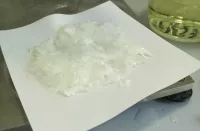
Trinitrotoluene TNT or -trinitrotoluene is a chemical compound C H...

Mexico City is the capital and largest city of Mexico...
Trending
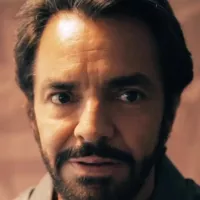
Eugenio Derbez is a highly successful Mexican actor and comedian renowned for his work in both Spanish and English language...
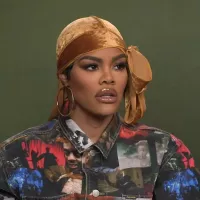
2 months ago Angela Bassett As Queen Ramonda Stuns At Vogue World 2025; Black Panther Tribute.
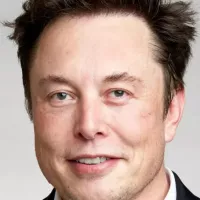
8 months ago Tesla Board Initiated CEO Search to Replace Elon Musk Amidst Leadership Concerns.

9 months ago Milo Manheim and Liz Gillies bond in Little Shop of Horrors, extend run.
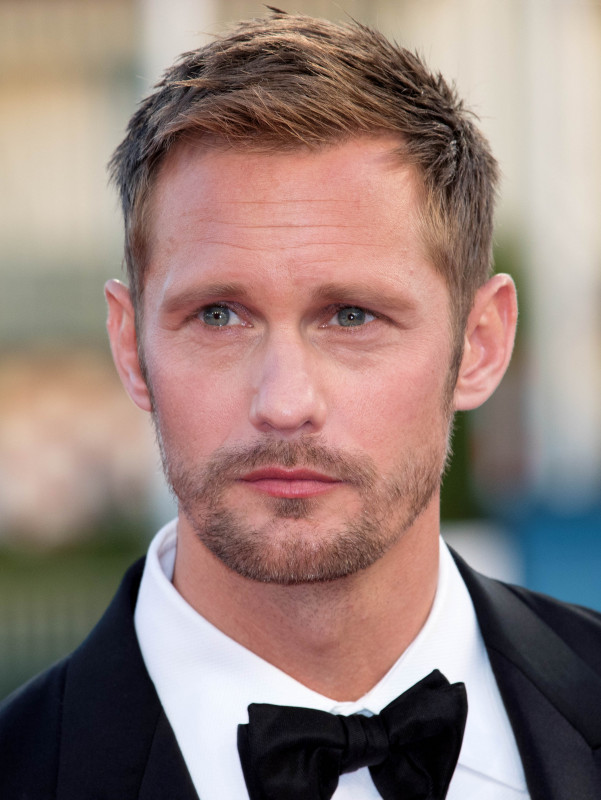
1 month ago Alexander Skarsgård reminds Miriam Margolyes of their meeting; addresses sexuality question, states 'not really' gay.
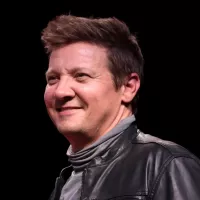
2 months ago Jeremy Renner faces accusations of ICE threat and misconduct controversy in Hollywood.
Popular

Stranger Things created by the Duffer Brothers is a popular...

XXXTentacion born Jahseh Dwayne Ricardo Onfroy was a controversial yet...

Kelsey Grammer is an accomplished American actor producer and singer...

Candace Owens is an American conservative political commentator and author...

Bernie Sanders is a prominent American politician currently serving as...

Melania Trump a Slovenian-American former model has served as First...